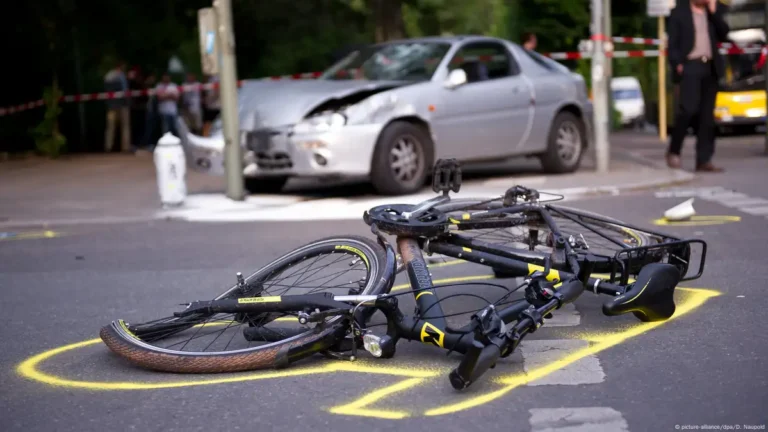Getting into a bicycle accident can be a traumatic experience, especially if you sustain serious injuries. After the dust settles, one of the next steps is likely to be filing a bicycle accident claim. Whether you’re pursuing compensation from your insurance company, the at-fault party, or both, it’s essential to understand what the process involves.
In this blog, we’ll walk you through what to expect when filing a bicycle accident claim. From the moment the accident occurs to the final settlement or trial, knowing the steps ahead of time can help you navigate the process with confidence and ensure you receive fair compensation for your injuries.
1. Seeking Medical Attention Immediately
The first thing to do after a bicycle accident is to seek medical attention, even if you don’t feel injured right away. Injuries like concussions, internal bleeding, and whiplash can be hard to detect immediately but may have serious long-term consequences.
-
Why It’s Important: Seeking medical care right away helps document the injuries you sustained and establishes a clear link between the accident and your injuries. This is vital for your insurance claim or personal injury lawsuit.
-
Record All Injuries: Make sure to follow up with your doctor and keep a record of all treatments, prescriptions, and medical bills related to the accident.
2. Gathering Evidence at the Scene
Once you’ve received medical attention, the next critical step is gathering evidence at the scene of the accident. Strong evidence can be the key to a successful claim. This includes:
-
Photographs: Take pictures of the scene, your bike, any damage to your bike or the vehicle involved, your injuries, and surrounding conditions like road hazards, traffic signs, and weather conditions.
-
Witness Statements: If there are any witnesses, ask for their contact information and a brief description of what they saw. Witnesses can help confirm what happened and provide unbiased support for your version of events.
-
Police Report: If the police were called to the scene, request a copy of the police report. This document can provide an official account of the accident and is crucial when determining liability.
3. Contacting Your Insurance Company
Once you’ve gathered evidence, the next step is to contact your insurance company. Whether you have health insurance, bicycle insurance, or motor vehicle insurance, reporting the accident is necessary to begin the claims process.
-
Report the Accident Promptly: Many insurance policies require that you report the accident as soon as possible. Delays could jeopardize your claim.
-
Provide Detailed Information: When speaking with the insurance adjuster, provide as much detail as possible about the accident and your injuries. Be honest, but avoid admitting fault or making statements that could hurt your case.
-
Understand Your Coverage: Your insurance company will explain your coverage options, including medical payments, property damage, and whether you have uninsured motorist coverage.
4. Determining Liability
One of the most important aspects of your bicycle accident claim is determining who is at fault for the accident. This will help establish who is responsible for compensating you for your damages.
-
Comparative Negligence: In some cases, both parties may share fault. For example, you may be partially at fault for the accident because you weren’t following traffic laws, or the driver who hit you was distracted. California follows a pure comparative negligence rule, meaning you can still recover compensation even if you are partially at fault, but your award will be reduced based on the percentage of fault assigned to you.
-
Investigating Fault: Your attorney will help gather evidence to prove the other party’s fault. This could include witness statements, accident reconstruction experts, and surveillance footage if available.
5. Negotiating with Insurance Companies
Once the insurance company has reviewed the evidence, they may make a settlement offer. However, settlement offers are often much lower than what you actually deserve, especially in cases of serious injury or significant property damage.
-
Evaluating the Offer: An experienced bicycle accident lawyer will help you evaluate whether the settlement offer is fair. They will calculate the total cost of your medical bills, lost wages, pain and suffering, and property damage to ensure the offer covers all of your losses.
-
Negotiation: If the offer is too low, your attorney will enter into negotiations with the insurance company to secure a fair settlement. If negotiations fail, your attorney may recommend moving forward with a lawsuit.
6. Filing a Lawsuit (If Necessary)
If you cannot reach a fair settlement through negotiations, your attorney may recommend filing a personal injury lawsuit. A lawsuit allows you to present your case in court and seek compensation for your injuries and damages.
-
The Process: If you file a lawsuit, you will go through the discovery phase, where both sides exchange evidence and witness statements. The case may eventually go to trial if a settlement is not reached.
-
Trial and Verdict: In court, both your lawyer and the defendant’s attorney will present their arguments. The jury (or judge) will decide whether you should receive compensation and, if so, how much.
7. Potential Damages You Can Claim
When filing a bicycle accident claim, you may be entitled to compensation for various types of damages, including:
-
Medical Expenses: Compensation for all medical bills related to the accident, including hospital stays, surgeries, medications, and physical therapy.
-
Lost Wages: If you had to miss work due to your injuries, you may be entitled to compensation for lost income.
-
Property Damage: If your bicycle was damaged in the accident, you can claim the repair or replacement cost.
-
Pain and Suffering: This refers to compensation for the physical and emotional distress caused by your injuries.
-
Future Damages: If your injuries require long-term care or result in permanent disability, you may be able to claim future medical expenses and loss of earning potential.
8. How Long Will the Bicycle Accident Claim Process Take?
The length of time it takes to resolve a bicycle accident claim can vary based on factors such as the complexity of the case, the severity of your injuries, and whether the case goes to trial. On average, it can take anywhere from a few months to a few years to reach a final resolution.
-
Factors That Affect the Timeline:
-
The severity of your injuries and the length of your recovery.
-
The complexity of the case and whether fault is disputed.
-
Whether the case goes to trial or is settled outside of court.
-
9. Why You Need an Experienced Bicycle Accident Lawyer
Navigating the bicycle accident claims process can be difficult, especially when you’re dealing with insurance companies, medical bills, and potential legal action. An experienced bicycle accident lawyer can help you every step of the way by:
-
Investigating the accident and gathering evidence to prove fault.
-
Handling all communication with insurance companies to ensure you don’t accept a low settlement.
-
Representing you in court, if necessary, to ensure you receive the compensation you deserve.
10. Conclusion
Filing a bicycle accident claim can be a complex and stressful process, but understanding what to expect and taking the right steps can help ensure you get the compensation you deserve. Whether you’re negotiating with insurance companies or filing a lawsuit, having an experienced lawyer by your side is essential for navigating the process and securing a fair outcome.
If you’ve been involved in a bicycle accident and need legal assistance, reach out to a trusted bicycle accident lawyer today to discuss your case and begin the process of getting the compensation you deserve.



